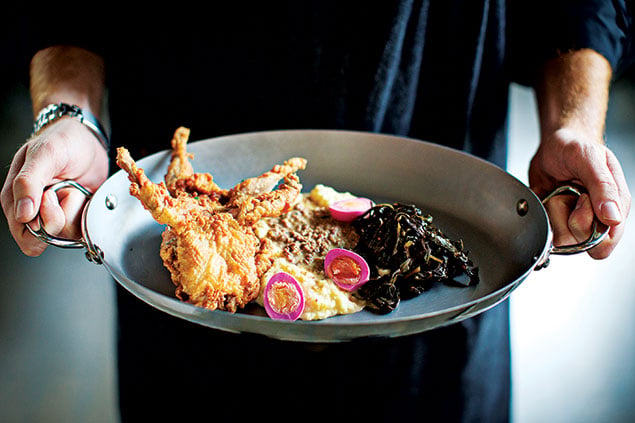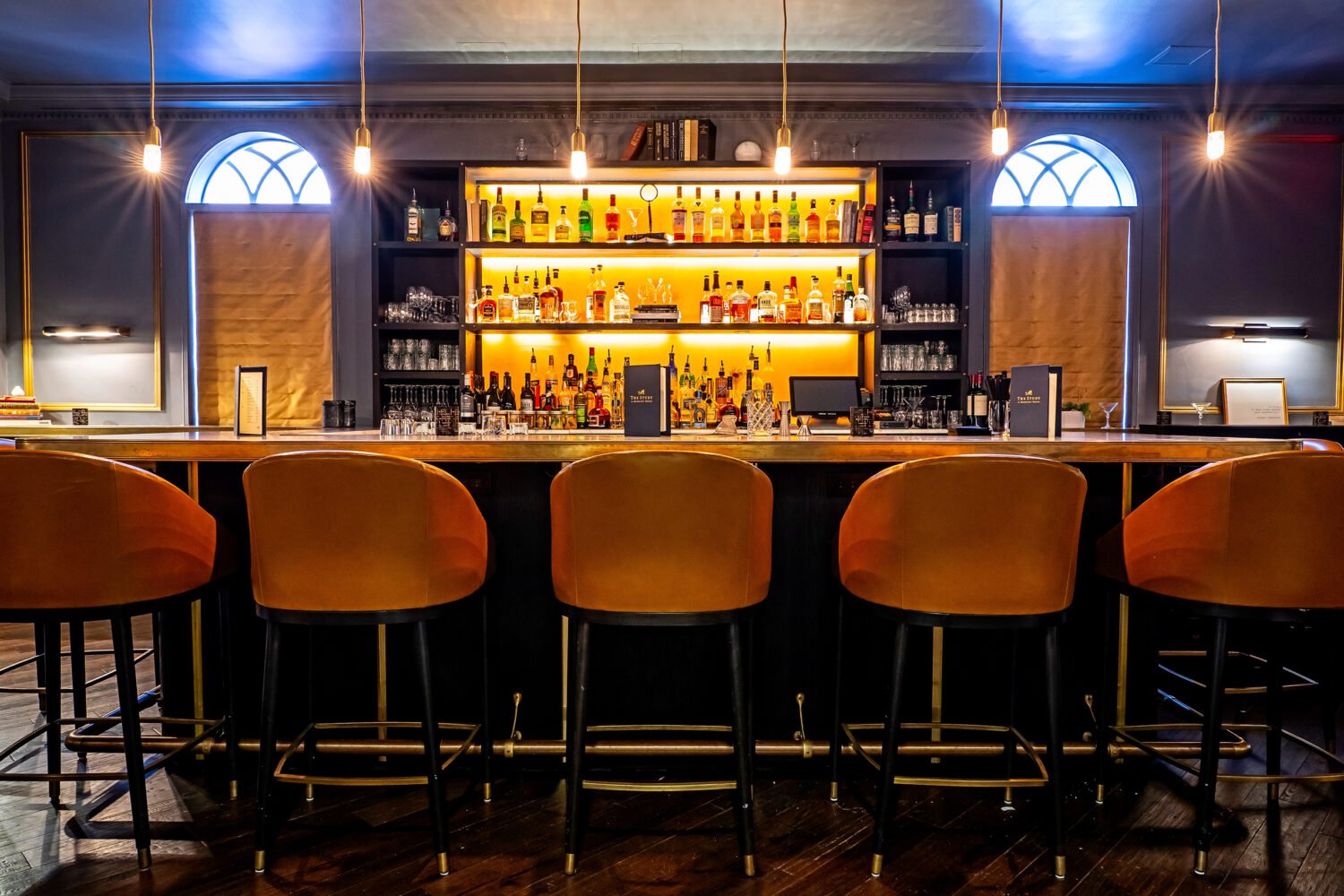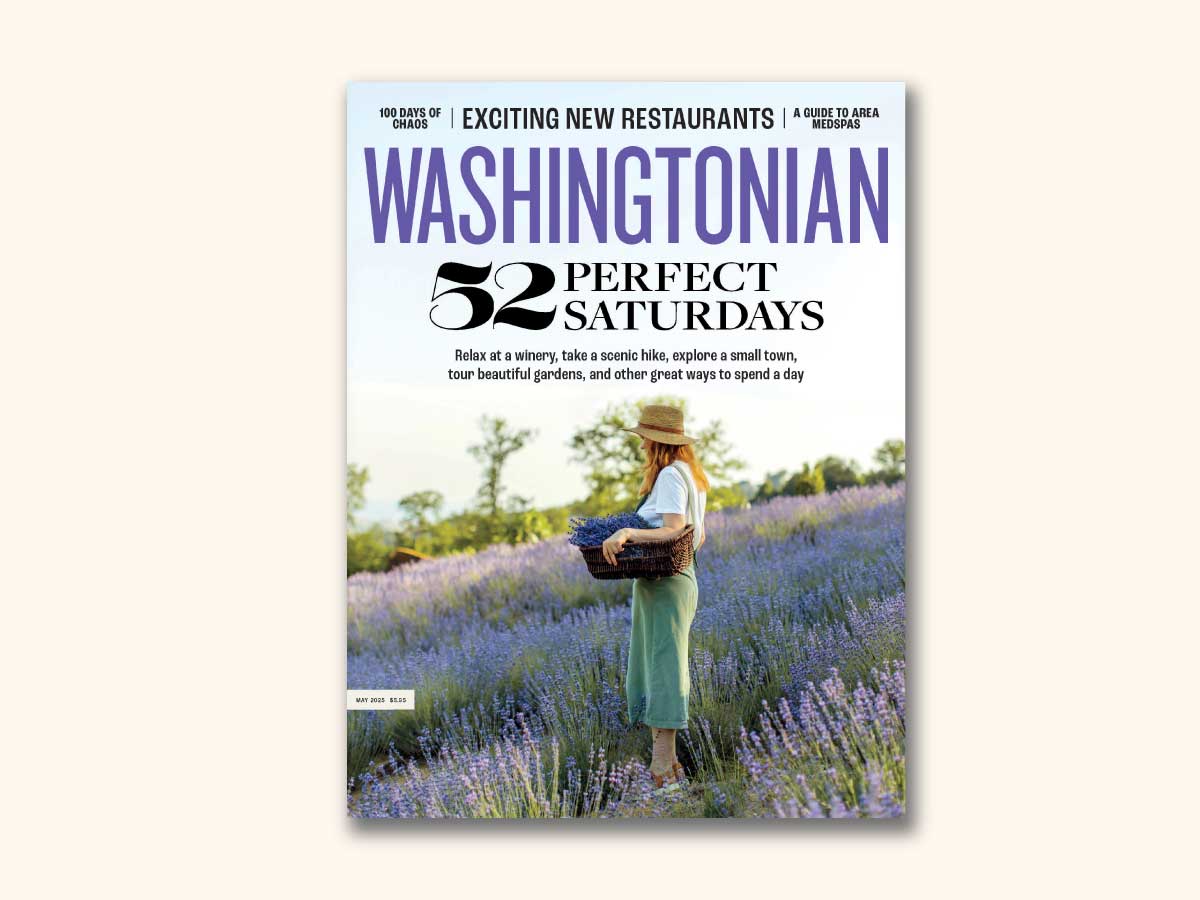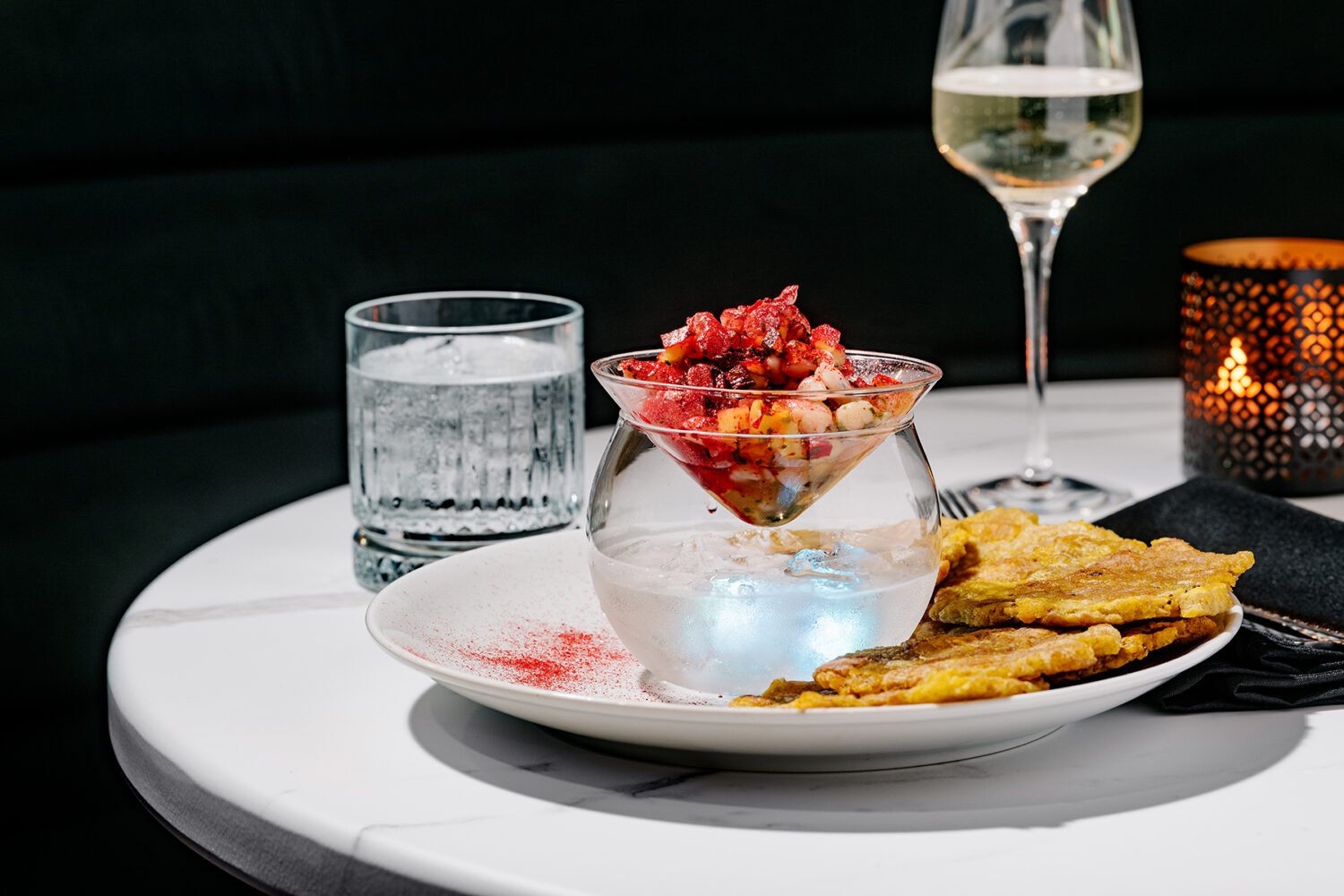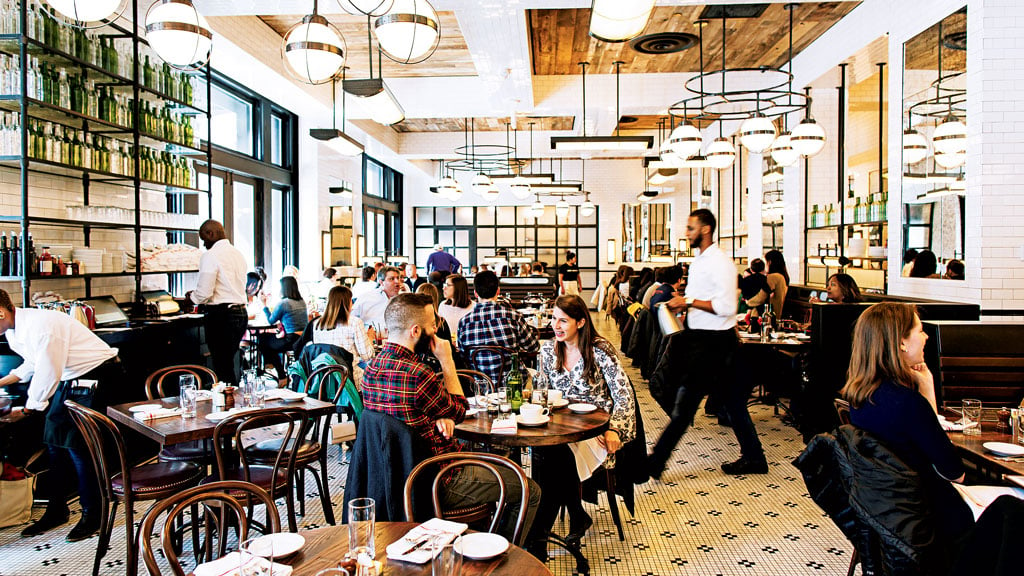About Gypsy Soul
If you were going to shoot a movie of the new Gypsy Soul, you wouldn’t start with any of the dishes. You’d start with an establishing shot.
Not of the restaurant, no. You’ll need to go wider than that.
Technically speaking, Gypsy Soul is in Merrifield. But properly speaking, it doesn’t belong to a city or a neighborhood. It belongs to a mall. A mall so desperate to distance itself from the depressingly square suburban shopping center that it refuses to cop to being a mall. This, friends, is a district. The Mosaic district. The restaurant’s address isn’t a street or avenue—it’s an “alley.” Edginess! Urbanity!
There’s a movie theater, but surely you’re not imagining some multiplex stinking of popcorn butter. No, no—this is the Angelika, straight outta SoHo: all art house, all the time. People don’t just drop gobs of money at the shops; they drop gobs of money on their apartments high above those shops. On a nice day, well-heeled parents pushing strollers congregate at the showpiece fountain in the plaza, and the developers’ dream that all of scattered, rootless Northern Virginia would flock here in pursuit of that elusive “third place” begins to look eerily prescient.
So there you have it: just like a city. Except tidier. And without all those inconvenient things that make a city a city.
Gypsy Soul was brought in for the purpose of establishing the Mosaic district as an outpost of downtown attitude, but in a lot of ways it doesn’t transcend its home so much as reflect it. There’s more than a little disconnect between intention and action.
“I don’t get the name,” a friend said as we sat at the bar one night, watching the talented barman Bryan Tetorakis mix a drink with the care of a scientist concocting a serum.
“You don’t?” I asked.
“Do you?”
I smiled. “No.”
Gypsy Soul is about as gypsified as its metal-and-glass setting. As for soul: Before the dishes hit the table, you may wonder whether James Brown’s inimitable grunts, whoops, and wails on the soundtrack constitute the center of it.
Better to think of “gypsy soul” as a description not of the restaurant and its vision but of the chef, RJ Cooper, and his self-image. Time to bring the camera in for some close-ups.
Like the chef’s orange Harley parked around the corner (license plate: braise). Like the low-lying leather seats that look onto the kitchen and are supposed to recreate the experience of sitting behind the wheel of a bike—making the point that watching a big-name chef bark out instructions to his cooks is equivalent to the thrill of the open road.
Most dishes lean toward the South, but I wouldn’t exactly call this Southern cooking, and I somehow doubt many Southerners would know what to make of roasted bone marrow topped with lobes of uni and mustard greens. I’m not even sure what to make of it.
Gypsy Soul is informed by Southern cooking in the way Kid Rock is informed by country music. Like Cooper, Rock hails from Detroit and fancies himself a kind of badass vagabond. Like Cooper, his gift is in braiding strands that aren’t generally braided.
The chef came to prominence running the kitchen at Vidalia in downtown DC, injecting a brash, backwoods spirit into the elegant New South aesthetic of owner Jeffrey Buben. He rambled off-road with his off-menu “redneck” cheesesteak (a sandwich he has reprised here: pork belly, shallot aïoli, and cheddar heaped to excess on a mammoth seeded roll) and memorably married the hayseed and the haute by dolloping Ritz-cracker ice cream onto French onion soup. No chef in the city seemed to be having as much fun. The exuberance brought him a James Beard Award in 2007.
Buben had a phrase for his apprentice’s script-defying exploits: “gone rogue.” The term stuck, giving rise to the name of Cooper’s first solo venture, Rogue 24, in DC’s Shaw neighborhood. The restaurant struck me when it opened, and to some degree still does, as more the sort of place you go to see what a chef can do with food and less the sort of place you go to have a good time. Reportedly, it wasn’t Cooper’s idea to debut with Rogue 24; he bowed to the wish of his investor, Hilda Staples. His plan had been to open a restaurant called Pigtails, a more casual, porkified place, closer in spirit to the cooking he mastered at Vidalia. I wish he had.
Gypsy Soul, in that sense, is a return to terrain the chef has already thoroughly (and expertly) plowed. That might not strike him as growth, and if you judge a restaurant’s ambition only by the number of dishes topped with powders and served with tweezers, then the place is a decidedly modest affair.
But we could all do with more modesty like this. The crabcake is the Platonic ideal you almost never find: fat, all lump, lightly bound, and hit with just enough lemon. The deviled eggs—each supremely creamy yellow mound dusted with togarashi pepper and speared with country ham—take kitsch and make it exquisite. Ditto for the pimiento cheese. I stopped myself from polishing off the bowl of salty, fatty fried chicken skins. Not because I didn’t like them—I loved them. But I wanted to love myself in the morning.
Most dishes are more complicated than they look. The best thing I had on my three visits would seem to be nothing more than your standard meat-and-two: fried chicken, grits, and collards. But these are quails, and no roadside diner fries this cleanly. Cut into the light and crunchy shell and the brined, dark-meat birds seep juice. The collards have that intense, stewy quality that suggests a long day at the stove, but somehow they don’t leave you feeling larded down with pork fat.
The shrimp ’n’ grits is proportionally out of whack—more tasso ham and shrimp than grits, a willful repositioning of a dish of poverty as a vehicle for plenty—but Cooper gets that it’s a stew, basically; the seafood nage, or stock, that rings the plate brings the elements into delicious coherence.
There can be no cracks, as there were early on at Rogue 24, about needing to hit a Wendy’s after dinner. The chef seems determined to send everyone away fat and happy. “This is an appetizer?” a friend wondered as the rabbit rillettes arrived. It was too mildly flavored to be worth the bother, but there was two thick slabs of it on a plate the size of a hubcap. The grumbling to be done is with the sort of niggling oversights that can undo all that complex, laborious effort Cooper prides himself on. Those rillettes, for one. Or under-salting, a problem at two of my meals. One night a peach crisp came to the table looking like perfection, but beneath the tanginess of the sour-cream ice cream and the buttery crunch of the oats was the kind of soupy goo that comes of using canned fruit.
In the case of a stew of okra, tomatoes, and onions, it wasn’t just salt that was needed but time on the stove. Not only had the components yet to marry; I don’t think they’d so much as kissed. The chef sought to correct the problem, sending us home with a new version. It was everything the original was not, intense and aromatic and evocative.
Allow me to linger before we fade to black. Because the story of the okra stew is the story of the restaurant writ small—a place that can come across as a willed collection of parts but is capable of extreme deliciousness. And as for that sendoff? More modest than bad-boy. Hell, I’d even call it Southern hospitality.
This article appears in the October 2014 issue of Washingtonian.

